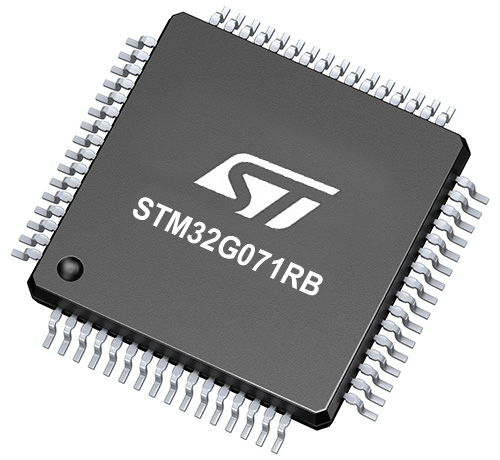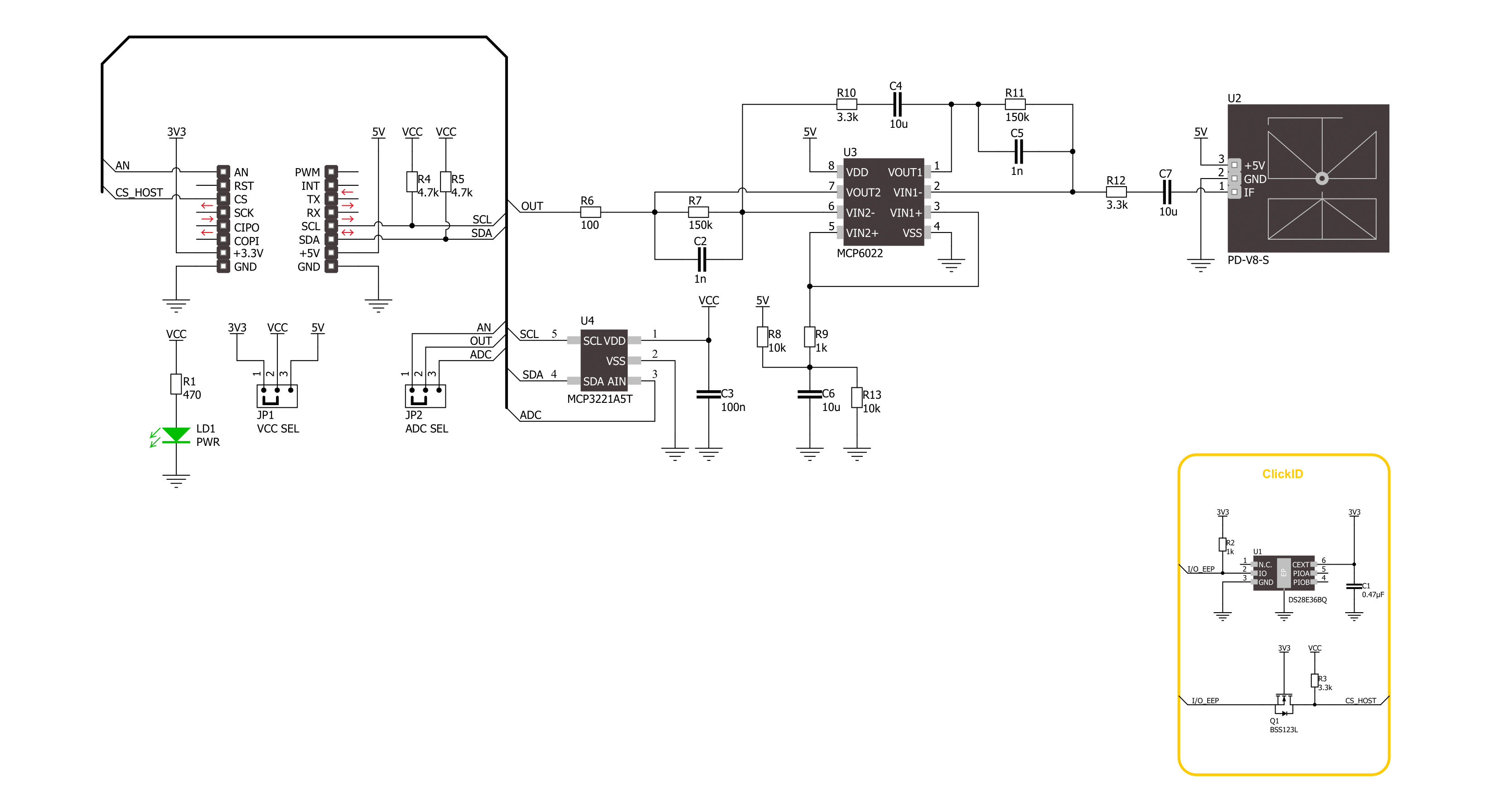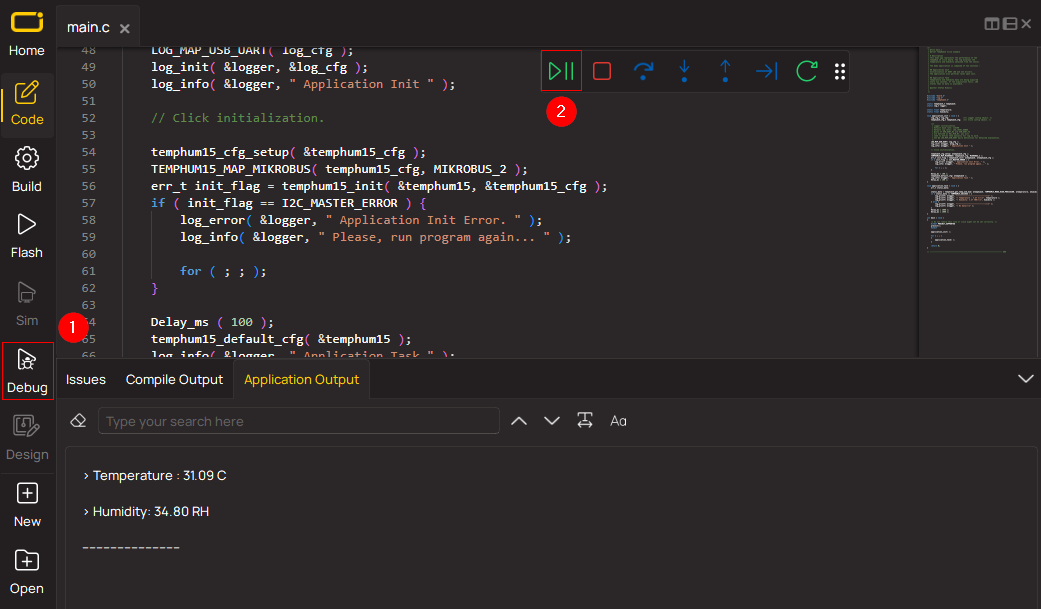Our newest microwave motion sensor seamlessly senses movement and proximity, creating an environment where technology responds intuitively to your every gesture.
A
A
Hardware Overview
How does it work?
Microwave 6 Click is based on the PD-V8-S, a high-frequency microwave sensor from Ningbo Pdlux Electronic Technology. This motion sensor is a C-band Bi-Static Doppler transceiver module. It is housed in a metal can and features a built-in resonator oscillator (CRO), providing a stable operation as it improves its front signal-receiving ability and reduces its flank blind area. The module adopts a flat plane antenna suitable for wall mounting. The Microwave 6 Click detects the frequency shift between a transmitted and a received signal reflected from a moving object within the field of view of the transceiver. The
produced low-level output is amplified over the MCP6022, a rail-to-rail input/output operational amplifier from Microchip. The amplified output goes to the ADC SEL jumper, which allows you to read the data over an analog pin of the mikroBUS™ socket or the MCP3221, a low-power 12-bit A/D converter from Microchip. The jumper is set to an analog pin by default. If the option is the ADC, you can count up to 22.3ksps in I2C fast mode. As mentioned, the Microwave 6 Click uses an analog AN pin of the mikroBUS™ socket or a standard 2-Wire I2C interface of the MCP3221 to communicate with the host MCU. The I2C of the
ADC supports standard (100KHz) and fast (400KHz) modes. Depending on the ADC of the host MCU, the onboard 12-bit ADC could be a better choice. Worth noting is that the microwave sensor works on 5V. This Click board™ can operate with either 3.3V or 5V logic voltage levels selected via the VCC SEL jumper. This way, both 3.3V and 5V capable MCUs can use the communication lines properly. Also, this Click board™ comes equipped with a library containing easy-to-use functions and an example code that can be used as a reference for further development.
Features overview
Development board
Nucleo-64 with STM32G071RB MCU offers a cost-effective and adaptable platform for developers to explore new ideas and prototype their designs. This board harnesses the versatility of the STM32 microcontroller, enabling users to select the optimal balance of performance and power consumption for their projects. It accommodates the STM32 microcontroller in the LQFP64 package and includes essential components such as a user LED, which doubles as an ARDUINO® signal, alongside user and reset push-buttons, and a 32.768kHz crystal oscillator for precise timing operations. Designed with expansion and flexibility in mind, the Nucleo-64 board features an ARDUINO® Uno V3 expansion connector and ST morpho extension pin
headers, granting complete access to the STM32's I/Os for comprehensive project integration. Power supply options are adaptable, supporting ST-LINK USB VBUS or external power sources, ensuring adaptability in various development environments. The board also has an on-board ST-LINK debugger/programmer with USB re-enumeration capability, simplifying the programming and debugging process. Moreover, the board is designed to simplify advanced development with its external SMPS for efficient Vcore logic supply, support for USB Device full speed or USB SNK/UFP full speed, and built-in cryptographic features, enhancing both the power efficiency and security of projects. Additional connectivity is
provided through dedicated connectors for external SMPS experimentation, a USB connector for the ST-LINK, and a MIPI® debug connector, expanding the possibilities for hardware interfacing and experimentation. Developers will find extensive support through comprehensive free software libraries and examples, courtesy of the STM32Cube MCU Package. This, combined with compatibility with a wide array of Integrated Development Environments (IDEs), including IAR Embedded Workbench®, MDK-ARM, and STM32CubeIDE, ensures a smooth and efficient development experience, allowing users to fully leverage the capabilities of the Nucleo-64 board in their projects.
Microcontroller Overview
MCU Card / MCU

Architecture
ARM Cortex-M0
MCU Memory (KB)
128
Silicon Vendor
STMicroelectronics
Pin count
64
RAM (Bytes)
36864
You complete me!
Accessories
Click Shield for Nucleo-64 comes equipped with two proprietary mikroBUS™ sockets, allowing all the Click board™ devices to be interfaced with the STM32 Nucleo-64 board with no effort. This way, Mikroe allows its users to add any functionality from our ever-growing range of Click boards™, such as WiFi, GSM, GPS, Bluetooth, ZigBee, environmental sensors, LEDs, speech recognition, motor control, movement sensors, and many more. More than 1537 Click boards™, which can be stacked and integrated, are at your disposal. The STM32 Nucleo-64 boards are based on the microcontrollers in 64-pin packages, a 32-bit MCU with an ARM Cortex M4 processor operating at 84MHz, 512Kb Flash, and 96KB SRAM, divided into two regions where the top section represents the ST-Link/V2 debugger and programmer while the bottom section of the board is an actual development board. These boards are controlled and powered conveniently through a USB connection to program and efficiently debug the Nucleo-64 board out of the box, with an additional USB cable connected to the USB mini port on the board. Most of the STM32 microcontroller pins are brought to the IO pins on the left and right edge of the board, which are then connected to two existing mikroBUS™ sockets. This Click Shield also has several switches that perform functions such as selecting the logic levels of analog signals on mikroBUS™ sockets and selecting logic voltage levels of the mikroBUS™ sockets themselves. Besides, the user is offered the possibility of using any Click board™ with the help of existing bidirectional level-shifting voltage translators, regardless of whether the Click board™ operates at a 3.3V or 5V logic voltage level. Once you connect the STM32 Nucleo-64 board with our Click Shield for Nucleo-64, you can access hundreds of Click boards™, working with 3.3V or 5V logic voltage levels.
Used MCU Pins
mikroBUS™ mapper
Take a closer look
Schematic

Step by step
Project assembly
Track your results in real time
Application Output via Debug Mode
1. Once the code example is loaded, pressing the "DEBUG" button initiates the build process, programs it on the created setup, and enters Debug mode.
2. After the programming is completed, a header with buttons for various actions within the IDE becomes visible. Clicking the green "PLAY" button starts reading the results achieved with the Click board™. The achieved results are displayed in the Application Output tab.

Software Support
Library Description
This library contains API for Microwave 6 Click driver.
Key functions:
microwave6_read_raw_adc- Microwave 6 read raw ADC value function.microwave6_read_voltage- Microwave 6 read voltage level function.microwave6_set_vref- Microwave 6 set vref function.
Open Source
Code example
This example can be found in NECTO Studio. Feel free to download the code, or you can copy the code below.
/*!
* @file main.c
* @brief Microwave 6 Click Example.
*
* # Description
* This example demonstrates the use of the Microwave 6 Click board™
* by reading and displaying the results of AD conversion and motion detection.
*
* The demo application is composed of two sections :
*
* ## Application Init
* The initialization of I2C or ADC module and log UART.
* After driver initialization, the app calculates the reference ADC value.
*
* ## Application Task
* The demo application reads the ADC results, takes an ADC sample,
* compares the difference between the taken samples and the ADC reference value,
* and reports the movement if the difference is higher/lower than the selected threshold value.
* Results are being sent to the UART Terminal, where you can track their changes.
*
* @author Nenad Filipovic
*
*/
#include "board.h"
#include "log.h"
#include "microwave6.h"
#define MICROWAVE6_THRESHOLD 0.5f
#define MICROWAVE6_FLAG_CLEAR 0
#define MICROWAVE6_FLAG_SET 1
static microwave6_t microwave6; /**< Microwave 6 Click driver object. */
static log_t logger; /**< Logger object. */
static float reference = 0, voltage = 0;
static uint8_t flag = MICROWAVE6_FLAG_CLEAR;
void application_init ( void )
{
log_cfg_t log_cfg; /**< Logger config object. */
microwave6_cfg_t microwave6_cfg; /**< Click config object. */
/**
* Logger initialization.
* Default baud rate: 115200
* Default log level: LOG_LEVEL_DEBUG
* @note If USB_UART_RX and USB_UART_TX
* are defined as HAL_PIN_NC, you will
* need to define them manually for log to work.
* See @b LOG_MAP_USB_UART macro definition for detailed explanation.
*/
LOG_MAP_USB_UART( log_cfg );
log_init( &logger, &log_cfg );
log_info( &logger, " Application Init " );
// Click initialization.
microwave6_cfg_setup( µwave6_cfg );
MICROWAVE6_MAP_MIKROBUS( microwave6_cfg, MIKROBUS_1 );
err_t init_flag = microwave6_init( µwave6, µwave6_cfg );
if ( ( ADC_ERROR == init_flag ) || ( I2C_MASTER_ERROR == init_flag ) )
{
log_error( &logger, " Communication init." );
for ( ; ; );
}
log_printf( &logger, " Calibrating the sensor...\r\n" );
log_printf( &logger, " There must be no movement near the sensor!\r\n" );
log_printf( &logger, "----------------------------------\r\n" );
Delay_ms( 3000 );
if ( MICROWAVE6_OK == microwave6_read_voltage( µwave6, &reference ) )
{
log_printf( &logger, " The sensor has been calibrated!\r\n" );
log_printf( &logger, " Detector AN Voltage : %.3f[V]\r\n", reference );
log_printf( &logger, "----------------------------------\r\n" );
Delay_ms( 100 );
}
else
{
log_error( &logger, " Communication error." );
for ( ; ; );
}
log_printf( &logger, "The motion detector unit is ready.\r\n" );
log_printf( &logger, "----------------------------------\r\n" );
Delay_ms( 100 );
}
void application_task ( void )
{
if ( MICROWAVE6_OK == microwave6_read_voltage( µwave6, &voltage ) )
{
if ( ( ( voltage + MICROWAVE6_THRESHOLD ) < reference ) ||
( ( voltage - MICROWAVE6_THRESHOLD ) > reference ) )
{
if ( MICROWAVE6_FLAG_SET == flag )
{
log_printf( &logger, " Motion detected!\r\n" );
log_printf( &logger, " Detector AN Voltage : %.3f[V]\r\n", voltage );
log_printf( &logger, "----------------------------------\r\n" );
flag = MICROWAVE6_FLAG_CLEAR;
Delay_ms( 100 );
}
}
else
{
flag = MICROWAVE6_FLAG_SET;
}
}
}
void main ( void )
{
application_init( );
for ( ; ; )
{
application_task( );
}
}
// ------------------------------------------------------------------------ END


































